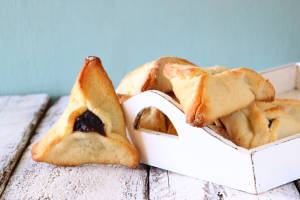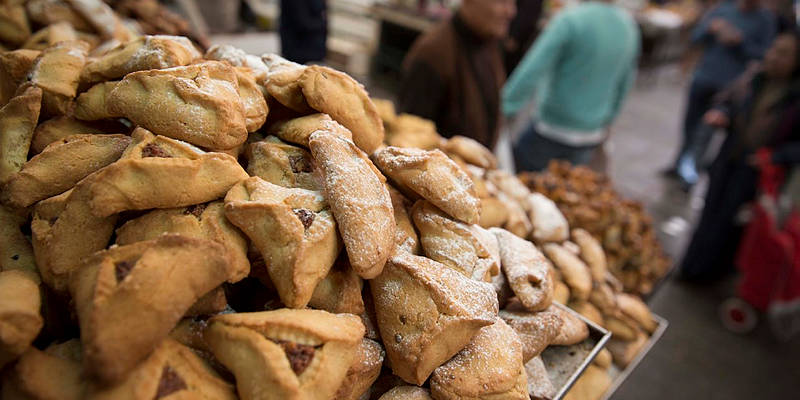While Jewish communities around the world celebrate Purim with a core set of common rituals, unique traditions abound, depending on the locale.
Regardless of their location, Jews across the planet read Megillat Esther (Scroll of Esther) in the synagogue on Purim.
Ashkenazi children for their part bring noise-makers to the synagogue and cause as much ruckus as possible whenever the name of the evil Persian Prime Minister Haman is mentioned. They come to the synagogue dressed up in various costumes, including the main characters of the Purim story — Queen Esther, Mordechai, Haman, and Ahaseurus, the King of Persia.
Conversely, the Iraqi and Yemenite Jewish communities don’t have a tradition of dressing up for Purim or making lots of noise when Haman’s name is mentioned. When members of these Jewish communities immigrated to Israel, however, they adopted these Ashkenazi Purim traditions.
Additionally, Jews usually prepare gifts of food to bring to friends and family.
Moroccan Jews traditionally make special Purim breads, which taste like sweet challah with raisins and hard-boiled eggs kneaded into the center of the bread to symbolize Haman’s eye.
Iraqi Jews make a pastry known as Sambusak El Tawa, which is filled with chicken and vegetables, while Ashkenazi Jews prepare hamentaschen pastries, which represent Haman’s hat and are usually filled with either fruit jams or chocolate.
Thus, the food differs from Jewish community to Jewish community, but the mitzvah of preparing food for Purim is international.
Jews around the world also give alms to the poor on Purim and eat a special meal in celebration of the salvation of the Jews of Persia from Haman’s genocidal ambitions.
Nora Iny, who grew up in Baghdad in the 1960’s, explained that Iraqi Jewish children were excused from school and over a period of two days, attended six parties, where spectacular dinners and lunches were thrown for family and friends.
Iraqi Jews, like most Mizrahi Jewish communities, also traditionally gave children presents for Purim, while Ashkenazi Jews usually give their children presents on Chanukah.

Hamantaschen, a Purim pastry treat. (Shutterstock)
Ashkenazi Jews also put on elaborate Purim shpiels, which are humorous plays. In Yemen, Jewish children made a wooden doll to symbolize Haman, which they placed on a wagon to prance around the neighborhood. While dragging the Haman dolls around their neighborhoods, Yemenite Jewish children would sing songs about Haman and at the end of the procession they would literally hang the Haman dolls!
In the Bukharan Jewish community in Uzbekistan, Jews traditionally make a Haman snowman full of fruit peels and other trash; at the end of the day, the Bukharan Jewish children would make a huge bonfire and melt the Haman snowman.
In the Baghdad Jewish community, Jews would write Haman on a piece of paper and erase it utilizing wine.
In the French Jewish community, children used to write the name Haman on stones and then work on striking out the name Haman during the Megillah reading, by clapping the stones together. In Italy, Jews would make an effigy of Haman and encircle it, while blasting trumpets.
In the Egyptian Jewish community, Jews would parade around on camels, donkeys, and horses, in order to memorialize how Mordechai was paraded around the city of Shushan by Haman, which marked the beginning of Haman’s demise from power.
And in the Persian Jewish community itself, a large effigy of Haman filled with gun powder would be hung on a large stick and then set on fire. All of these traditions illustrate that Jews around the world have varying customs of how to blot out Haman’s name from history, in compliance with Exodus 17:14, “I shall surely erase the memory of Amelek.”
By: Rachel Avraham

